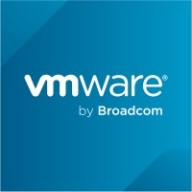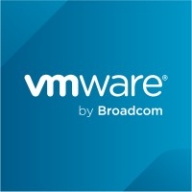

VMware Tanzu CloudHealth and VMware Aria Automation are solutions within the cloud management category. VMware Aria Automation is perceived to have an advantage due to its advanced automation capabilities, despite VMWare Tanzu CloudHealth's strengths in cost management and cloud governance.
Features: VMware Tanzu CloudHealth includes comprehensive cost management, real-time analytics, and resource optimization, focusing on financial visibility. VMware Aria Automation offers robust automation for infrastructure provisioning and application delivery, crucial for supporting DevOps and multi-cloud operations.
Room for Improvement: VMware Tanzu CloudHealth could enhance its automation features to better compete in automation tasks. It might also improve integration with newer cloud services and enhance predictive capabilities for resource management. VMware Aria Automation could improve by simplifying its deployment process, enhancing user interface intuitiveness, and expanding its cost management features.
Ease of Deployment and Customer Service: VMware Tanzu CloudHealth is known for its straightforward deployment and efficient customer support, facilitating seamless integration into existing setups. VMware Aria Automation, while more complex to deploy due to its sophisticated features, is supported by dedicated assistance to manage implementation challenges.
Pricing and ROI: VMware Tanzu CloudHealth typically provides competitive setup costs with a quick return on investment focused on cost control. VMware Aria Automation, although requiring a higher initial investment, offers long-term ROI benefits through extensive automation and IT optimization.
| Product | Market Share (%) |
|---|---|
| VMware Aria Automation | 9.5% |
| VMWare Tanzu CloudHealth | 1.9% |
| Other | 88.6% |


| Company Size | Count |
|---|---|
| Small Business | 32 |
| Midsize Enterprise | 24 |
| Large Enterprise | 130 |
| Company Size | Count |
|---|---|
| Small Business | 4 |
| Midsize Enterprise | 2 |
| Large Enterprise | 4 |
VMware Aria Automation is a cloud management tool that allows companies to simplify their cloud experience through a modern automation platform. The solution is designed to deliver self-service clouds, multi-cloud automation with governance, and DevOps-based security and infrastructure management. It helps organizations improve IT agility, efficiency, and productivity through its various features.
VMware Aria Automation has multiple use cases that include the following:
VMware Aria Automation Features
VMware Aria Automation has various features that allow users to easily perform operations. Some of the solution's capacities include:
VMware Aria Automation Benefits
VMware Aria Automation offers its users various benefits. Some of the biggest advantages that the solution brings to companies that utilize it include:
Reviews from Real Users
Awais J., CTO/CEO at a tech services company, likes VMware Aria Automation because it saves a lot of time, provides more visibility, and has extensive automation capabilities.
An IT consultant at a government rates VMware Aria Automation highly because the product gives you flexibility to analyze and consume resources.
VMware Tanzu CloudHealth, formerly known as VMware Aria Cost Powered by CloudHealth, is a specialized cloud management platform tailored for Multi-Cloud Cost Optimization. It offers comprehensive visibility into cloud spending across various providers, enabling users to identify areas for optimization and make informed resource allocation decisions. With features like reserved instance management, resource rightsizing, and automated cost governance policies, it facilitates financial management for optimal cost efficiency. Beyond cost optimization, Tanzu CloudHealth enhances cloud operations through workload optimization and governance automation, catering to multi-cloud environments encompassing public, private, and hybrid clouds. Its primary focus remains on enabling organizations to effectively manage and reduce cloud expenditures while supporting operations across diverse cloud platforms.
We monitor all Cloud Management reviews to prevent fraudulent reviews and keep review quality high. We do not post reviews by company employees or direct competitors. We validate each review for authenticity via cross-reference with LinkedIn, and personal follow-up with the reviewer when necessary.